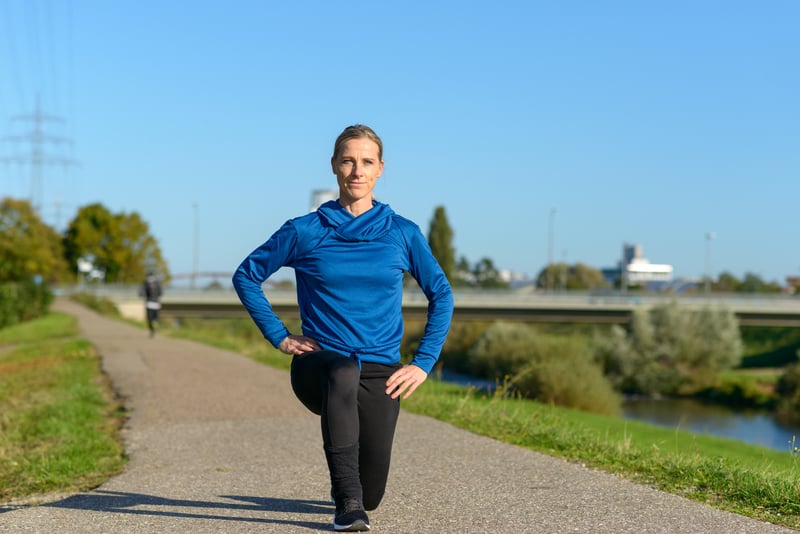6 Exercises That Improve Joint Mobility As You Age

Joint mobility is something you may not think about often, but as you age, it will become more and more important.
What Is Joint Mobility?
Joint mobility is the ability of a joint to move (painlessly and without restriction) through a full range of motion. Mobility is different from flexibility in that flexibility is how well your muscles can stretch; mobility, on the other hand, is how well your muscles can move. In fact, because joints have no direct blood supply to them, it is necessary to move the joint through the full range to assist in replenishing the area with nutrients through circulating synovial fluid.
Why Is Joint Mobility Important?
Joint mobility may not be the first thing that comes to mind when you think about getting in shape, but maybe it should be! Having joints that can move easily and without pain can help you move freely, avoid injuries, and prevent a development of muscular imbalances. Not only is proper movement important for exercise, but joint mobility is also critical for everyday tasks.
Simple acts like reaching up into a cupboard or bending down to pick up a bag all require a certain amount of mobility. Without supple, mobile joints, life can get tough as every movement can feel stiff and painful. But, with a few simple exercises, you can help maximize your joint mobility.
6 Joint Mobility Exercises
While many forms of exercise are helpful for overall health, there are some exercises that specifically improve joint mobility. Try to include some of these movements every time you do a workout.
1. Upward and Downward Dog—start in plank position (face down on a mat, up on your toes, with your upper body supported over your wrists, palms down). Push your hips upward while keeping your legs and arms straight until your body forms an “A” shape. Feel a good stretch through your hamstrings, hips, back, and shoulders. Next, lower yourself back down into the plank position and bend your elbows to lower your body down to the ground (i.e., into the bottom of a pushup position).
Adjust your feet so you are no longer on your toes and are lying with your thighs and the fronts of your feet flat on the ground. Keeping the tops of your feet pushed into the ground, push up through your hands and wrists to straighten your arms while stretching out the front of your body and arching your back. Remember to keep your shoulders down and relaxed. Enjoy this stretch for the entire front of your body before returning to center and repeating the series— from plank to downward dog to plank to upward dog—a few times.
2. Shoulder stretch—while standing with your feet about hip-width apart, lift your right arm in front of you until it is parallel to the floor. With your left hand, grab your right arm and bring it across your chest. Keeping your shoulders down and relaxed, gently pull on your right arm to feel a full stretch across your upper back and shoulder. Hold for a count of five and release. Repeat on the opposite side.
3. Walking Lunges—lunges will help increase your circulation and the mobility in your knees, hips, and ankles. Begin by standing with your hands on your hips and your feet about hip-width apart. Step forward with your right leg and bend your knees until they’re both bent to 90 degrees. Pause and then push off and propel yourself forward to return to standing. Repeat on the left side to complete one repetition. Continue for ten reps on each side.
4. Neck Circles—having a limber neck will help your whole body stay aligned and relieve tension and stress at the same time. Begin by standing upright with your hands on your hips. Face forward and gently and slowly roll your head to the right. Twist your head lightly to the back and let your neck elongate in the front. Continue rolling your head to the left and feel the stretch on the right side of your neck. Lastly, roll your head forward and let it hang for a moment so you can feel the stretch in the back of your neck. Repeat.
5. Ankle Circles—begin by standing (you may want to hold onto a table or chair for balance). Lift your right leg and point your right foot. Next, roll it to the right, then flex it upward, and then roll it to the left. Reverse and roll your ankle in the other direction. Repeat ten times and then switch feet, repeating the sequence on the other side.
6. Wrist Stretches—start by stretching both arms out in front of you. With your left hand, grab your right hand and gently pull your palm toward your wrist. Next, grab your fingers and gently pull your hand straight up and back. Don’t pull too hard—this should feel really good and not at all painful. Repeat on the opposite side.
The bottom line is that most types of stretching and resistance training will improve joint mobility. Ensure that you include weight training or body weight resistance exercises, and go through the full range of motion as part of your regular exercise program to help lubricate and strengthen the joints.






